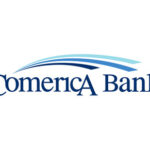Navigating the bill at a restaurant can sometimes feel like deciphering a new language. You’re likely familiar with tipping your server, but what about those extra charges you sometimes see? Understanding the difference between a service charge vs. a tip is crucial for both diners and restaurant operators. As costs rise for everyone in the restaurant industry, clarity around these fees becomes even more important. This guide will break down the key distinctions to help you understand exactly what you’re paying for.
In this guide, we will answer the pressing question: Is A Service Charge A Tip? We’ll also explore:
- What exactly is a service charge in a restaurant context?
- Is it legal for restaurants to implement service charges?
- What are the reasons behind restaurants adding service fees?
- What is the fundamental difference between a service charge and a tip?
- Should you tip on top of a service charge?
- How can restaurants effectively implement service charges?
Decoding the Service Charge
A service charge is essentially a mandatory fee that a business, including a restaurant, adds to your bill. Think of it as a charge to cover operational costs associated with providing the service. You might encounter service charges in various industries; for example, event venues might charge a service fee to cover staffing and setup for events.
Consumers often have mixed reactions to service charges, particularly when these fees are unexpected or not clearly explained. These unexpected costs can be perceived negatively as “junk fees.” Transparency is key to ensuring customer satisfaction and avoiding negative perceptions.
Service Charges in Restaurants: A Closer Look
Restaurant service charges are fees added to a guest’s bill to offset various operational expenses. These charges are not arbitrary; they are usually implemented to cover specific costs. Common examples of restaurant service charges include:
- Automatic Gratuities: Often applied to larger parties (six or more), these are pre-calculated gratuities, usually 18% or higher.
- Holiday Service Fees: Added during peak seasons or holidays to manage increased labor costs due to higher staffing needs or premium pay for staff working on holidays.
- Cancellation Fees: Charges for reservations canceled with short notice, especially during busy periods, designed to mitigate losses from no-shows.
- Takeout and Delivery Fees: Cover costs related to packaging materials, delivery driver compensation, and transportation logistics.
- Private Event Charges: Cleaning or service fees associated with private event bookings to cover additional setup, cleaning, and staffing.
- Bottle Service Fees: Common in nightclubs, these fees are added to the purchase of entire bottles of alcohol and cover specialized service.
- Specialty Ingredient Surcharges: Fees added to dishes with premium or seasonal ingredients to reflect their higher cost.
 A customer using a mobile payment app to pay their restaurant bill, illustrating modern payment methods and potential service charge application.
A customer using a mobile payment app to pay their restaurant bill, illustrating modern payment methods and potential service charge application.
The Legality of Service Charges
The legal landscape surrounding service charges is not uniform across the United States. Regulations vary by state and are evolving. For example, California has recently enacted legislation to ban hidden service fees, mandating that all surcharges and additional costs must be clearly advertised upfront. This law aims to increase transparency and prevent surprise charges on the final bill.
Connecticut has also proposed similar legislation in 2024, pushing for mandatory fee disclosures for consumer goods and services, including restaurants. The support from the state’s Governor and Attorney General suggests a high likelihood of this bill becoming law, reflecting a growing trend towards fee transparency.
Furthermore, the U.S. Congress introduced the Junk Fee Prevention Act in 2023. This act seeks to enforce businesses to display the total price of goods and services, inclusive of all mandatory fees, right from the initial point of advertisement. If passed, the Federal Trade Commission would gain authority to regulate and ensure clear communication about service fees across all industries.
Why Restaurants Implement Service Fees
Restaurants are facing increasing financial pressures, and service charges are often seen as a way to mitigate these challenges. Restaurant owners are grappling with escalating costs, and service fees can offer a financial buffer. Over the past four years, average restaurant food costs in the US have surged by 29%, and labor costs have risen by 31%, according to the National Restaurant Association. TouchBistro’s 2024 State of Restaurants Report highlights that restaurant operators identify high food and inventory costs as their primary source of financial strain.
To remain competitive in attracting and retaining staff, many restaurants have increased wages. TouchBistro’s report also indicates that 64% of restaurants surveyed are offering higher wages. While essential for staffing, this further strains profitability, making service charges a tool to help maintain financial health.
Service Charge vs. Tip: Key Differences Explained
To definitively answer “is a service charge a tip?”, we need to understand the core distinctions. While both appear on your bill, service charges and tips are fundamentally different.
The primary difference lies in their nature: service charges are mandatory, predetermined fees set by the restaurant management. Conversely, a tip, or gratuity, is optional. The amount of a tip is at the customer’s discretion, based on their satisfaction with the service provided by the server. The choice of whether and how much to tip rests entirely with the diner. This discretionary aspect is the crucial differentiator between a service charge vs. a tip.
Secondly, the destination of the funds differs significantly. Service charge revenue goes directly to the restaurant, considered part of the restaurant’s revenue. Tips, however, are intended for the service staff, specifically the server who provided the service. While tips are for the staff, it’s common practice in many establishments for servers to participate in tip pooling or “tipping out,” where a percentage of their tips is shared with other support staff like bartenders and kitchen staff.
In the US, understanding the tipped minimum wage is also relevant when discussing service charges and tips. The tipped minimum wage is a lower hourly wage rate applicable to employees who regularly receive tips. The federal minimum wage for tipped employees is currently $2.13 per hour in direct wages, provided that this amount, combined with earned tips, equals or exceeds the federal hourly minimum wage. If the total falls short, the employer is legally obligated to make up the difference.
Gratuity: Tip or Service Charge?
The term “gratuity” itself can be a source of confusion in the service charge vs. tip discussion. While often used interchangeably with “tip,” not all gratuities are legally considered tips by authorities like the IRS.
Specifically, an auto-gratuity, which is an automatically added gratuity, is classified by the IRS as a service charge, not a tip. This IRS distinction is based on several key factors that differentiate service charges from voluntary tips. According to the IRS guidelines, for a payment to be considered a tip, it must meet these criteria:
- Freedom from Compulsion: The payment must be made voluntarily by the customer, not mandated by the establishment.
- Unrestricted Right to Determine Amount: The customer must have the sole right to decide the amount of the payment.
- Not Subject to Negotiation or Employer Policy: The payment amount should not be predetermined, negotiated, or dictated by employer policy.
- Customer Determines Recipient: Generally, the customer has the right to decide who receives the payment, although tip pooling arrangements are common and accepted.
These IRS guidelines highlight that if a “gratuity” is mandatory, like an auto-gratuity for large groups, it legally functions as a service charge, regardless of the terminology used.
Service Charges vs. Tips: Weighing the Pros and Cons
Now that we’ve clarified the legal and definitional aspects, let’s evaluate the practical implications of tips vs. service charges for your restaurant business. The optimal choice isn’t universal; it depends on your restaurant’s specific context and goals.
Here’s a comparative look at the advantages and disadvantages of each system:
| Pros | Cons |
|---|---|
| Service Charges | – Cost Offset: Helps offset rising food and labor costs without drastically increasing menu prices, which can deter customers. – Higher Wages: Enables restaurants to offer more competitive and stable wages, aiding in attracting and retaining skilled staff. – Financial Stability: Contributes to predictable revenue streams, enhancing the restaurant’s long-term financial health. |
| Tips | – Familiar Practice: Tipping is a widely accepted and understood practice in many cultures, particularly in the US restaurant industry. – Customer Control: Guests appreciate the control over gratuity amount, feeling they can reward good service directly. – Incentivizes Service: Tipping directly links server compensation to service quality, incentivizing excellent customer interactions. |
 Restaurant staff using a credit card terminal for customer payment, emphasizing the point of transaction where service charges and tips are applied.
Restaurant staff using a credit card terminal for customer payment, emphasizing the point of transaction where service charges and tips are applied.
Tipping on Top of a Service Charge: Is it Expected?
A common point of confusion for diners is whether to tip when a service charge is already included. Generally, the answer is yes, you should still consider tipping on top of a service charge, as these fees often serve different purposes and don’t replace the role of a tip.
The primary reason to tip even with a service charge is that tips are traditionally meant to directly compensate the service staff for their attentiveness and skill. Service charges, in contrast, are collected by the restaurant and may be used for various operational costs, not exclusively for server compensation. While some portion of service charge revenue might indirectly benefit servers through wages or tip pooling, it’s not guaranteed to function as a direct tip. Furthermore, tipping based on service quality provides a direct incentive for servers to deliver exceptional experiences, benefiting both customers and the restaurant in the long run.
An exception to this general guideline is when an auto-gratuity is explicitly stated as covering the server’s tip. In such cases, especially with large groups where auto-gratuities are common, additional tipping is usually not expected. However, clarity from the restaurant on what the service charge covers is essential to avoid ambiguity.
Implementing Service Charges Effectively
If your restaurant decides to implement service charges, careful planning and transparent communication are crucial for success. Consider these different service charge models:
- Percentage-Based Service Charge: For example, an 18% auto-gratuity for parties of eight or more, or during specific events. Clearly communicate this on menus, bills, and even during reservation booking. Emphasize that this charge replaces the need for a traditional tip.
- Flat Rate Service Charge: A fixed dollar amount, like a $5 service fee on bills over $25, to contribute to operational costs. Display this charge clearly on menus and bills.
- Variable Service Charge: Tiered charges based on the total bill amount (e.g., 15% for bills under $50, 18% for $50-$100, 20% for over $100). Clearly list these tiers on the menu and inform guests at the host desk upon arrival.
- Takeout/Delivery Service Charge: A small, fixed fee for takeout or delivery orders (e.g., $2 per order) to cover packaging and transportation expenses. Disclose this fee on online menus and during the ordering process.
The most suitable model will depend on your restaurant type (full-service dine-in vs. quick-service/takeout) and your specific financial goals. For full-service restaurants, percentage-based auto-gratuities might align better with the service model.
Best Practices for Service Charge Implementation
- Transparency is Paramount: Don’t hide service charges. Clearly display them on your website, menus (both online and in-house), and bills. Verbal communication by staff is also beneficial.
- Staff Education: Thoroughly train your front-of-house staff to understand the rationale behind service charges and equip them to confidently and accurately explain them to guests.
- Gather Guest Feedback: Actively solicit customer feedback regarding service charges. This input can provide valuable insights into customer perception and areas for improvement in your approach.
- Highlight the Value Proposition: Communicate the benefits associated with service charges, such as enabling better staff wages, improved ingredient quality, or enhanced service standards. Frame it positively as contributing to a better overall dining experience.
Understanding the nuances of service charges vs. tips is essential for both restaurant operators and diners. By clarifying these fees, restaurants can navigate rising costs while maintaining transparency and customer satisfaction. And for diners, knowing the difference empowers informed decisions when dining out and understanding where their money goes.
